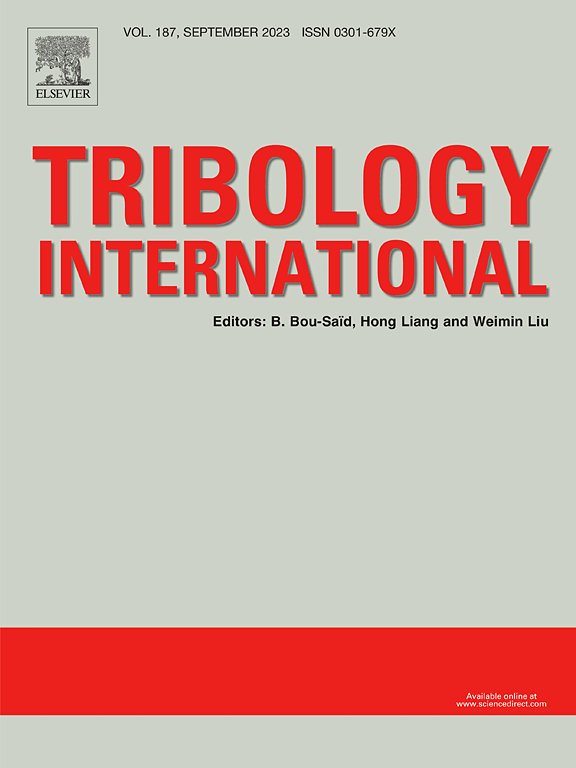Influence of self-contact friction on the hysteresis mechanical behavior of Entangled Metal Pseudo Rubber
IF 6.1
1区 工程技术
Q1 ENGINEERING, MECHANICAL
引用次数: 0
Abstract
Focusing on the nonlinear hysteresis behavior of Entangled Metal Pseudo Rubber (EMPR) under quasi-static compression, this study investigates the impact of self-contact friction on its energy dissipation and path memory characteristics. By employing virtual manufacturing and finite element numerical simulation, we digitally reproduce the entire process from wire winding to cold stamping and precisely tune the contact friction coefficient between wire turns under interference-free conditions. The results show that the hysteresis behavior of EMPR can be decomposed into three mechanically meaningful components: nonlinear elastic backbone force, friction force, and hysteretic force. Among these components, the elastic backbone force remains consistent as a unique function of strain, while the friction and hysteretic contributions determine the opening of the hysteresis loop and the material’s path memory features. Numerical simulations and experimental validations demonstrate that adjusting the friction coefficient can significantly alter the material’s energy absorption capacity and hysteresis loop area, thereby providing favorable conditions for extracting, identifying, and verifying the physical meaning of the elastic backbone line. This study not only deepens our understanding of the mesoscopic frictional contact mechanism in EMPR and the construction of physically meaningful hysteresis constitutive relationships, but also offers an important theoretical foundation and technical reference for designing high-performance EMPR components.
自接触摩擦对缠绕金属伪橡胶滞回力学行为的影响
以准静态压缩下纠缠金属伪橡胶(emr)的非线性迟滞行为为研究对象,研究了自接触摩擦对其能量耗散和路径记忆特性的影响。通过虚拟制造和有限元数值模拟,数字化再现了金属丝缠绕到冷冲压的全过程,并在无干扰条件下精确调整了金属丝匝间的接触摩擦系数。结果表明,emr的滞回特性可以分解为三个有力学意义的分量:非线性弹性骨干力、摩擦力和滞回力。在这些成分中,弹性骨干力作为应变的独特函数保持一致,而摩擦和迟滞的贡献决定了迟滞回路的打开和材料的路径记忆特征。数值模拟和实验验证表明,调整摩擦系数可以显著改变材料的能量吸收能力和滞回线面积,从而为提取、识别和验证弹性骨干线的物理意义提供有利条件。本研究不仅加深了我们对EMPR细观摩擦接触机理的认识,构建了具有物理意义的滞回本构关系,而且为设计高性能EMPR部件提供了重要的理论基础和技术参考。
本文章由计算机程序翻译,如有差异,请以英文原文为准。
求助全文
约1分钟内获得全文
求助全文
来源期刊

Tribology International
工程技术-工程:机械
CiteScore
10.10
自引率
16.10%
发文量
627
审稿时长
35 days
期刊介绍:
Tribology is the science of rubbing surfaces and contributes to every facet of our everyday life, from live cell friction to engine lubrication and seismology. As such tribology is truly multidisciplinary and this extraordinary breadth of scientific interest is reflected in the scope of Tribology International.
Tribology International seeks to publish original research papers of the highest scientific quality to provide an archival resource for scientists from all backgrounds. Written contributions are invited reporting experimental and modelling studies both in established areas of tribology and emerging fields. Scientific topics include the physics or chemistry of tribo-surfaces, bio-tribology, surface engineering and materials, contact mechanics, nano-tribology, lubricants and hydrodynamic lubrication.
 求助内容:
求助内容: 应助结果提醒方式:
应助结果提醒方式:


